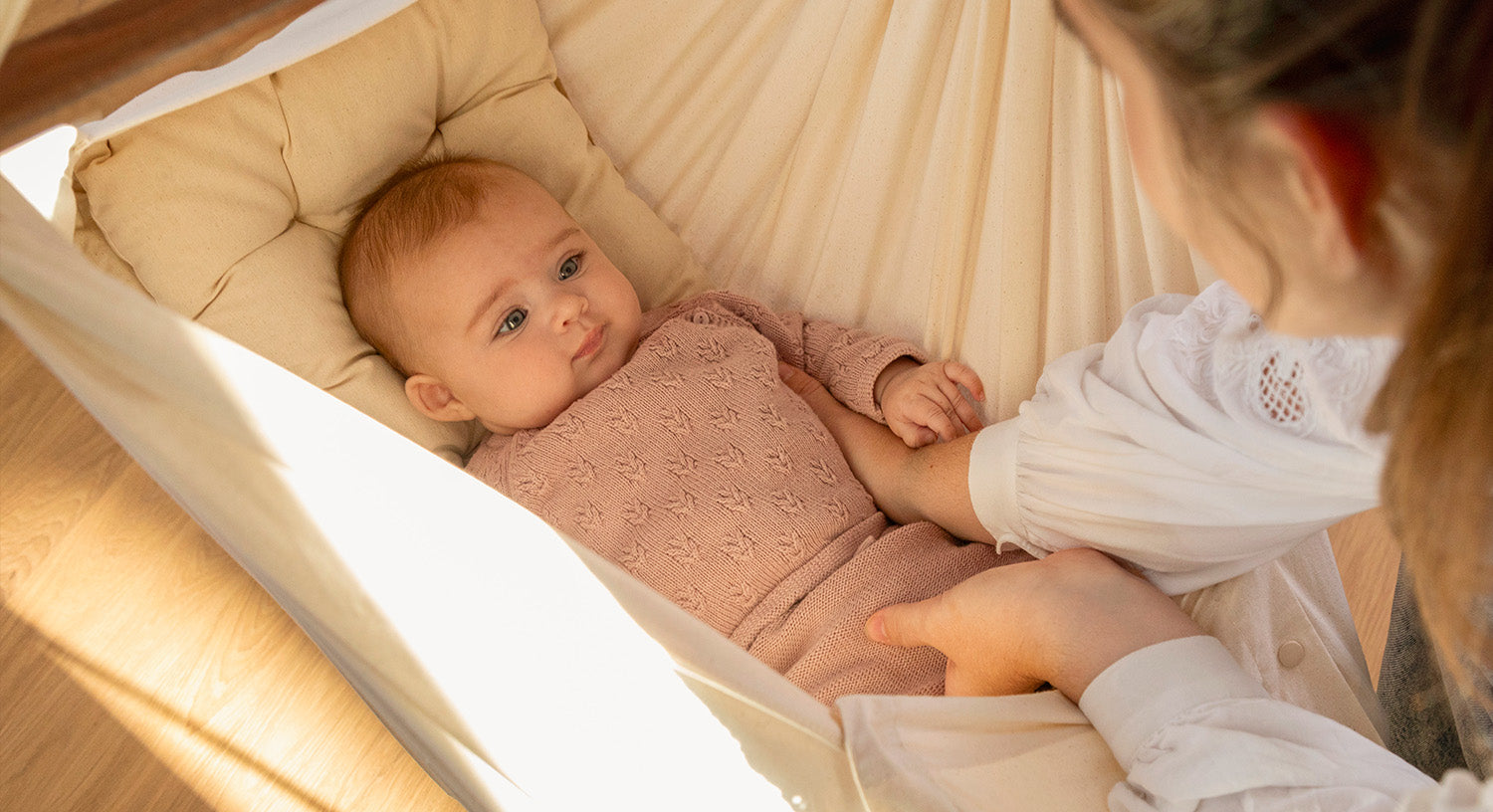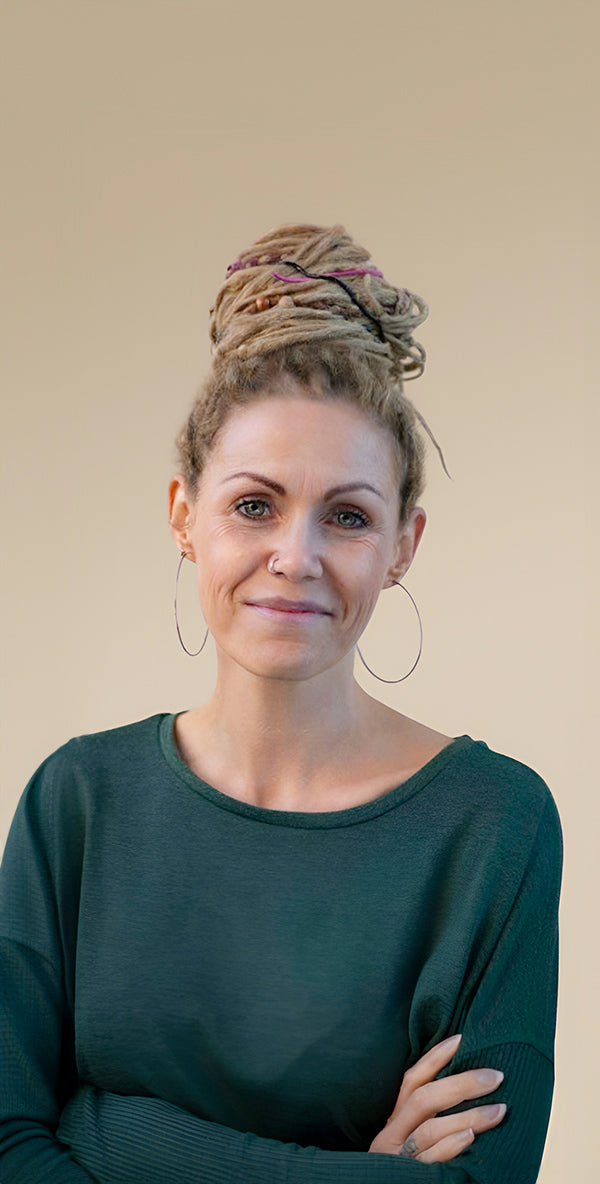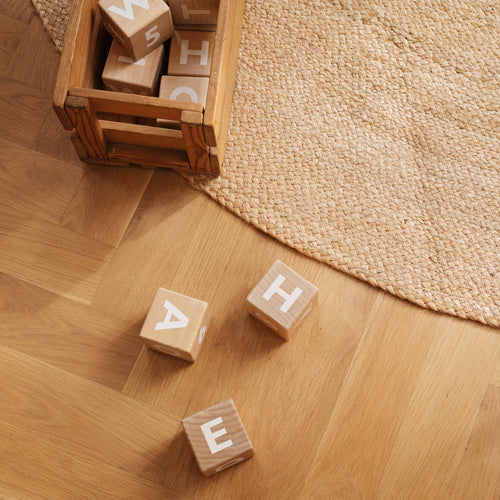


At night you sleep, during the day you are awake – unless you have a baby who doesn't yet know the difference between day and night. In these cases, it can be difficult for parents to get their much-needed night's rest. However, there are actually some simple things parents can do to support their child's circadian rhythm – and thus create optimal sleep conditions for both the child and themselves.
Read on as we turn everything you thought you knew about sleep, night and day upside down.
What is a circadian rhythm?
A circadian rhythm is the rhythm that the body follows every single day – the body's internal clock, if you like.
People are active during the day when it is light out and sleep at night when it is dark. The body has adapted its internal functions to this rhythm, so we produce less urine at night, for example, and don't get hungry, either.
In turn, the body secretes hormones that keep us asleep and keep the body's functions in a kind of hibernation state while we are at sleep at night. Similarly, the body secretes hormones that keep us (reasonably) alert and active during the day. During the day, we are social, we eat and we tackle many tasks that are part of everyday life. Regardless of age, the circadian rhythm is mostly controlled by light/darkness and social activities, such as eating, among other things.
Babies do not follow this rhythm when they are born, partly because they do not produce and secrete melatonin, which is the name for the "night hormone" that is produced and secreted when the eye no longer detects light. The production of melatonin only begins in very small quantities at 1-2 months. Babies need to be at least 3-4 months old before their melatonin levels are high enough to support a normal day/night rhythm.
Learn what affects your child's circadian rhythm
Since newborns do not produce and secrete melatonin when they are born, they simply cannot tell the difference between night and day. In other words, newborns are legally excused if they expect you to be awake when everyone else is asleep.
However, there are three simple things you can do from birth to support the development of a circadian rhythm marking a clear difference between day and night.
- Research suggests that ensuring the baby is exposed to plenty of daylight and normal everyday activities may help the baby develop the melatonin production, and consequently a circadian rhythm, more quickly. This includes: Open the curtains, turn on the radio and keep the home "going" during the day – even when you mostly feel like lazing on the sofa all day.
- The circadian rhythm is "reset" and restarts every single morning when the first light hits the retina. Many people think that a fixed bedtime is what determines the circadian rhythm. In reality, it is actually the time you wake up each morning that sets the rhythm for the day. So, try to keep a regular morning routine as well as a regular evening routine. You need to get up and go early every morning – not just before noon. Otherwise, there won't be enough hours of daylight or an adequate amount of activities before it is evening again and darkness tells the body it is time for bed.
- Breastfed babies receive small amounts of melatonin through the breast milk during the evening and night hours. In addition, they get corresponding amounts of cortisol (the daytime activity hormone) in the milk produced during the day. In this way, breastfeeding helps obtain and maintain the baby's circadian rhythm. This is why it is important that the baby gets "evening milk" at bedtime. And conversely, get "day milk" during the daytime; otherwise, it may have a counteracting effect. Overall, milk supports the baby's sleep, whether it comes in the form of breast milk or formula.

Sleep pressure: When your child is tired and needs to sleep
Along with the circadian rhythm's regulation of sleep and daytime activity, your child will become increasingly tired during his or her waking hours. This is called "sleep pressure". Despite the slightly negative insinuation, sleep pressure is simply the fatigue that is not related to day or night, but automatically builds up during one's waking hours. It all comes down to the hormone adenosine, which is a neurotransmitter that builds up in the brain when we are awake.
Sleep is the only thing that breaks down adenosine, whilst activity, for example, can trigger cortisol and adrenaline, which can override sleep pressure. However, overriding is not the same as breaking down and is only a temporary solution.
The more adenosine that is accumulated, the longer you have to sleep to break down the adenosine. The more adenosine you have in your brain, the more tired you feel, and at some point the accumulation of adenosine is so great that you will fall asleep, whether you want to or not. This is seen, for example, in people who fall asleep behind the wheel.
As an adult, you may know the feeling of sleep pressure that is not linked to bedtime, starting from mid-afternoon when you may feel a bit sluggish. Maybe you feel like taking a power nap, an extra cup of coffee, or you get the munchies - adenosine can also trigger hunger.
How quickly they simply MUST sleep and how much sleep they need varies greatly from person to person – regardless of age.
In babies, not much adenosine needs to build up before the baby feels tired and needs to sleep, which is why babies take naps. The younger the baby, the shorter the time the baby can normally stay awake before needing to sleep a little. Keep in mind, however, that babies and their sleep needs vary greatly. For more on this topic, see our blog post, "What is normal baby sleep?".
Naps: Short naps can be just fine
In the past, babies were thought to need to sleep 1, 2 and 3 hours at a time to reach a state of so-called "deep sleep". It was also believed that awakenings after a shorter period of time meant "interrupted sleep", which equalled the risk that the child did not get enough, or good enough, sleep. This idea came with and still carries a fear that the child will not develop normally, understandably causing parents to feel worried. Who wouldn't be?
Fortunately, we now know better, as we have described in the blog post, "What is normal baby sleep".
In fact, even a short nap breaks down adenosine. For some babies, 5-10 minutes of sleep can be "enough" to stop them feeling the pressure to go back to sleep. This explains the little power nappers who just snatch 20 minutes of sleep here and there. As parents, you can rest easy; if your child seems to be thriving and developing as you would expect, there is no need to worry. Fortunately.

But what about the saying, "sleep begets sleep"?
It was once believed that "sleep begets sleep", meaning the more the baby slept, the more and better the baby would sleep. This is another view that can give parents grey hairs and a lot of unnecessary worries. Because what are you doing wrong if your child does not follow this "sleep begets sleep" motto?
Fortunately, today we have a better understanding of the circadian rhythm and sleep. We have the knowledge we need to understand that babies obviously cannot sleep if they are not tired. In addition, we now understand that there can be huge differences in how many and how long naps children need, even if they are the same age.
For example, this means that some babies take short power naps during the day and generally don't need much sleep, whilst other babies need several long naps daily and just need a lot of sleep in general. Both scenarios are perfectly normal; it all depends on what amount of sleep each baby thrives on.
The circadian rhythm and sleep pressure combine to trigger night-time sleep
We know from the above that the body's internal clock is regulated by light/darkness and a good amount of activity during the day – and that it is good to get up in the morning. At the same time, we know that a child's need for sleep, both during the day and at night, varies greatly.
This is why it makes sense to look at how the circadian rhythm interacts with sleep pressure and why the child needs not only to rely on the circadian rhythm but also sleep pressure to fall asleep at night.
Naps are designed to help ease fatigue during the day, allowing the child to participate in everyday activities and enjoy a rich variety of sensory stimuli. This could, for example, be something as simple as lying on the stomach while watching you sort the laundry, going shopping with you, going to see family or friends, or coming along when older siblings need to be dropped off or picked up from childcare or after-school activities.
Increasing physical and mental fatigue (sleep pressure) resulting from all these activities, combined with naps that relieve fatigue just enough to continue, but do not remove sleep pressure completely, provides optimal conditions for night-time sleep. Naps that completely remove sleep pressure due to the frequency and the duration of the naps, counteract the goal to pave the way for better night-time sleep. So, it is really important to try out what works best for your child, so they can sleep well at night – without being tired during the day.

Finding the balance between the circadian rhythm and sleep pressure
For adults, sleep pressure will increase steadily from morning to night, and a nap, especially in the latter half of the day, will disrupt the circadian rhythm by easing sleep pressure. For babies, it works a little differently.
For babies, the sleep pressure rises in a more zigzag-like curve, where the baby gets tired and falls asleep, causing the sleep pressure to drop slightly, and where the baby gets active again and the sleep pressure rises again. This repeats itself throughout the day, and by evening time, despite napping during the day, the child will still have built up a sleep pressure high enough to support night-time sleep – under optimal conditions, that is.
If you think that you can "simply" minimise sleep during the day to ensure sleep at night, think again. That is not how it works. If the sleep pressure is too high, the baby will release cortisol, which counteracts fatigue, making the baby "overtired" and struggling to calm down.
Most parents will agree that it sounds great in theory, but in practice it can feel very different.
So, how do you find the balance?
You do this by experimenting, and above all by observing how your child responds to the small measures you take and the choices you make.
Do you have a baby owl or a baby lark?
Perhaps you have heard of A and B people to describe whether you are the kind of person who gladly wakes up early in the morning or prefers to stay up late and sleep in?
Once your child has established a circadian rhythm, you will also be able to tell if your child is a morning or an evening person – the terms "larks" or "owls" are often used when referring to children. The lark is awake early in the day. The owl stays awake in the evening.
While the circadian rhythm can be influenced by light/darkness and social activities, being an A or a B person is a biological process in the body that cannot be influenced to the same extent.
Most babies start out as an A person, feeling good in the mornings and late mornings and gradually becoming more tired and sluggish as the day progresses, even with naps. But some babies are B people who have their best hours in the afternoon – and enjoy engaging in social interaction in the evening hours. It is easy to see how this can present a few challenges if parents are tired at this time.
This biological process cannot be changed. Yet, you can do your best not to reinforce your child's (very) early mornings or (very) late evenings by being structured around the whole family's daily rhythm and the child's naps.
Tips for activities and naps that support the circadian rhythm
- Offer sleep – but stop again if the child does not welcome it.: If you spend more time putting your baby to bed than he or she spends sleeping, your baby probably just wasn't tired enough or didn't get the sleep aid he or she needed. Learn more about sleep aid here: SLEEP AID: HELP YOUR CHILD FALL ASLEEP
- Is your baby tired? Or just "tired of this"?: Babies get bored, too. And boredom can look like (incipient) fatigue. You can experiment with switching activities before offering sleep if your baby seems a little fidgety, squirms, fusses and refuses to continue participating in the activity you are engaged in.
- Your baby gets tired of experiencing (the same) things: No matter how beautifully your home is decorated, most babies really like to see and experience something new. Even leaving the house to go get a litre of milk is an experience in itself. Maybe you can find a new route to the local supermarket next time you head out for groceries? Maybe you can take a packed lunch to the park? Maybe you can go to the bakery – or invite some guests over?
- Fill your day with what feels good to you: Yes, we do actually mean that. Your baby has no idea that there is such a thing as baby rhythmics or hymn singing. If YOU get more out of a trip to the café with your friend or a trip to the garden centre, then do it! Activities don't always have to centre around your baby – your baby will love experiencing something new with you, whatever you are doing.
- You will spend the time no matter what, so make sure to spend it on something that is enjoyable: After 45 minutes on the yoga mat, you will probably feel ready to do something else anyway. The same goes for the pram, which you will push on when the baby wakes up after a 45-minute nap. When your baby isn't welcoming sleep – stop and change course. Remember that sleep pressure needs to be present before your baby can fall asleep. Activities build sleep pressure, so you might find some fun things to do until your baby gets tired again.
- It is okay to wake up a sleeping baby: We are well aware that this is a somewhat controversial thing to say. However, it is not always possible to fit your baby's sleep into your family's routine, and you will find yourself in situations where your baby's napping doesn't fit into the family's schedule. For example, when your baby takes an extra late afternoon nap or you need to go out in the middle of the midday nap. Don't worry. You can, in good conscience, gently and carefully wake the baby after a while, so that the circadian rhythm of sleep from evening to morning is still supported, if this is what your family desires.
- A good bedtime routine is worth its weight in gold: Offering the same kind of sleep aid in the same order when the baby goes to bed at night is one of the easiest ways to help the baby fall asleep. Whether it's singing the same song while the baby is being breastfed or given a bottle, or whether it's a bath, milk, pyjamas and a book before the baby is rocked in the baby hammock. Repetition has a calming effect on the child and helps the child's nervous system to calm down, which is an absolute prerequisite for falling asleep. At the same time, the repetitions "code" the child's brain to associate the bedtime routine with bedtime. This is called an acquired reflex, or simply "a habit".
Summary
- The circadian rhythm is the body's internal clock that plays a role in regulating all bodily functions, not just sleep.
- Sleep pressure is the feeling of fatigue that builds up during the waking hours.
- The circadian rhythm and sleep pressure serve as the body's two sleep regulators, which together regulate when the body is awake or asleep.
- You sleep best at night when you go to sleep at the bedtime dictated by the circadian rhythm and when, at the same time, you have a sufficiently high sleep pressure.
- For babies, the threshold for the amount of sleep pressure needed to feel tired and in need of sleep is much lower than for adults – this is where naps play an important role.
- There are big differences in the sleep needs of babies of the same age – and consequently also in how many and how long naps each child needs. Trial and error is the name of the game.
- Many and/or long naps, especially at the end of the day, can ease the baby's sleep pressure so much so that the baby is not tired enough to sleep, even though it is actually bedtime.
- The baby can only sleep as much as the baby needs, spread over the course of the entire day. This is why many hours of sleep during the day seem to "steal" time from night-time sleep. However, it's about finding the right balance: you can't simply prevent the baby from sleeping during the day to ensure a good night's sleep. This will only counteract your efforts to help your baby fall asleep. Find the balance that works for your child.





































